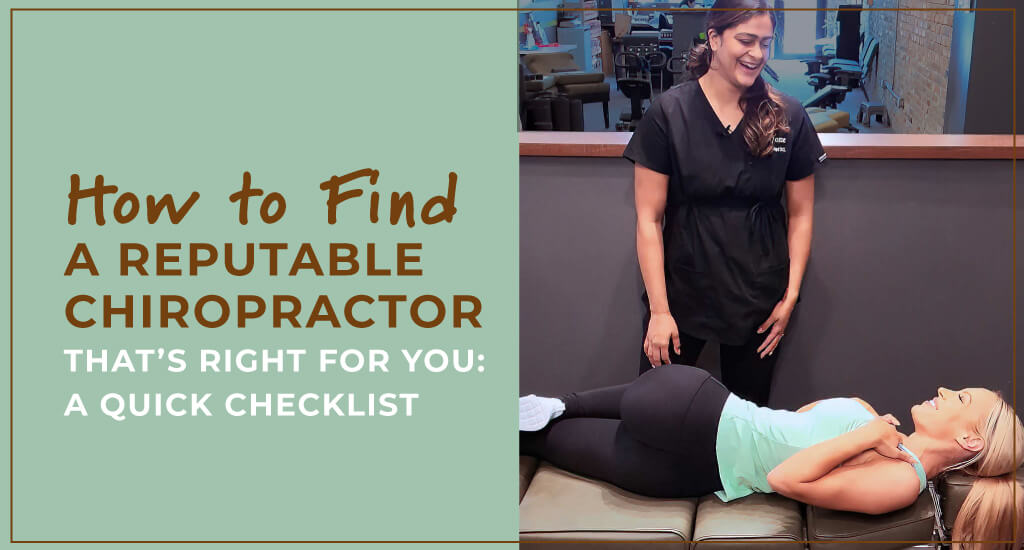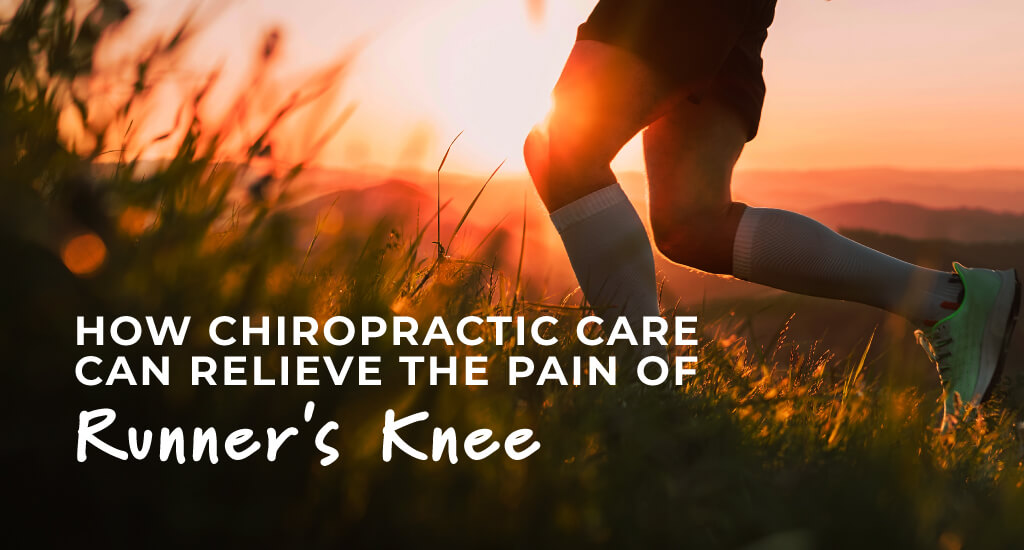
How to Find a Reputable Chiropractor That’s Right for You: A Quick Checklist
Take a closer look at chiropractic care from how it works to what it treats, and how to find a chiropractor that’s right for you.

If your knee pain has been steadily intensifying (or you’re feeling pain even when you’re not very active) you may have developed runner’s knee. Patients sometimes think the condition only occurs in habitual runners, but runner’s knee is an umbrella term for a wide range of painful knee injuries medically referred to as Patellofemoral Pain Syndrome (PPS).
In this post we’ll cover the causes, prevention tips, symptoms and effectiveness of chiropractic care for runner’s knee.
Although it doesn’t entail broken bones or torn tendons, runner’s knee causes pain and discomfort for almost 20% of Americans over the age of 45. How? The root causes vary widely, but osteoarthritis — wear-and-tear of the joint cartilage that cushions the ends of our bones — is the most common cause for this age group. That firm, slippery tissue that enables frictionless joint motion can deteriorate until bone rubs on bone.
How can you prevent this deterioration? Chiropractic care for runner’s knee can minimize or slow down deterioration by increasing your mobility, range of motion and strength. Bonus? It can also decrease your risk of falls and fractures. Randomized controlled trials have demonstrated that chiropractic care helps prevent knee injuries in athletes, which is why so many sports teams have made it a best practice.
Runner’s knee can affect all age groups and demographics. The reason? Symptoms of runner’s knee can be attributed to structural misalignments like:
Weak thigh muscles or ankle joint mobility issues can also force a person to run or walk in a strained way, generating friction between the kneecap and femur, which gradually breaks down cartilage, and eventually disrupts your mobility and your daily routine. How?
Musculoskeletal misalignment, muscle weakness and immobility can lead to inflammation and damage to your:
Overuse can also cause inflammation in this delicate joint. That’s why runners, jumpers, skiers, cyclists, soccer players, football players, tennis players and skateboarders who put heavy stress on their knees often struggle with runner’s knee symptoms. That’s also why so many of these athletes leverage chiropractic care for runner’s knee prevention.
Although the type and degree of symptoms vary from person to person, and even from life stage to life stage, the most common symptoms of runner’s knee are:
Sore kneecaps after exercising are not normal — they require professional attention to discover the root cause. Treating your symptoms with painkillers or ice will help in the short-term, but will not target the root cause of your runner’s knee.
A Doctor of Chiropractic (DC) will investigate the root cause of your pain, then perform adjustments and prescribe active therapies that are targeted to the type and severity of your injury. If your diagnosis severity requires more aggressive treatment, they can also refer you to another type of specialist.
Depending on your age, joint structure, general health, diet and lifestyle, you may be able to prevent runner’s knee, or at least stave it off for a few years. An experienced Doctor of Chiropractic can identify your weakest muscles and strategically work to strengthen them via adjustments and active therapies — which will increase in difficulty as you grow stronger.
In addition to strengthening your muscles to help prevent re-injury, chiropractic care has been shown to improve your:
You’ll be encouraged to rest whenever your body signals you with pain, strain or discomfort. Over-stressing your joint muscles and tendons can lead to serious injuries that can hinder your healing.
Between chiropractic appointments you can prevent swelling, pain and immobility while strengthening your muscles and joints by doing gentle knee mobility exercises at home.
It’s a good idea to consult with your DC the first time you try these knee mobility exercises to ensure that you’re safely and gently working the proper muscles. Make sure to take breaks and allow your body to recuperate between each one.
These simple knee mobility exercises can help keep you functional until your DC appointment.
Your Doctor of Chiropractic (DC) will spend your first session establishing the root cause of your runner’s knee, assessing your health history and discussing your goals.
Because there are so many possible root causes for runner’s knee and so many health and lifestyle triggers that can aggravate it, getting a proper diagnosis and personalized care plan requires seeing a neuro-musculoskeletal expert.
Your lumbar spine (low back) will need to be thoroughly examined. If your lumbar spine nerves, which supply the muscles around your knee joint become damaged (by anything from arthritis, trauma or slipped discs) you may feel pain in your knee.
Your DC will also check whether your pelvis is out of alignment, causing your body weight to be distributed on your legs unevenly, destabilizing your knee. These are examples of referred pain — pain that is caused in one place and felt in another — and resolving it may require a knee adjustment protocol.
Tracking and treating referred pain, joint misalignment and muscle weakness is critical to your treatment. After a thorough exam, your DC will be able to tell you whether your pain is being caused by:
Only after identifying and assessing the location and degree of your joint damage they’ll begin to craft your personalized care plan.
Misalignment and muscles strains require the strengthening of muscles surrounding your knee joint damage. Chiropractic care accomplishes this with a highly targeted, personalized combination of:
Decades worth of clinical trials across the globe have shown the efficacy of chiropractic care for runner’s knee, as well as other musculoskeletal pain that’s caused by misaligned joints, structural challenges, tissue micro-tears or weak muscles.
In fact, the Physical Therapy and Rehabilitation Journal reviewed 15 large studies on exercise therapy modalities for runner’s knee pain and demonstrated that exercise therapies have a strong pain-reducing effect on patellofemoral pain syndrome (PFPS).
When first prescribed, active therapies may feel like assignments, but patients often tell us that after a couple of weeks these strategic personalized protocols become part of a lifestyle that helps them move more freely and painlessly through their days (or marathons).
Check in with your nearest Chiro One doc at one of our welcoming open-plan clinics across the country. They’ll explore the root cause of your pain with a thorough exam, then personalize a care plan — a combination of gentle chiropractic adjustments and active therapies.
Subscribe and get news, articles & offers sent right to your inbox each month.
"*" indicates required fields
By subscribing you are agreeing to the Terms and Conditions and Privacy Policy.